Of the farm, a Castagneto Carducci, Felciaino locality 115 a
Vermentino 85%, Viognier 8%, Incrocio Manzoni Bianco 7%
Remarkably heterogeneous they mainly have clayey-silty features.
90-120 meters above sea level.
The vineyards are located in a large hilly area lapped by a stream, which determines a warm, cool, ventilated temperate climate, with great excursion between day and night, favoring the cultivation and development of the aromas in the wine.
Guyot rearing, with arch, rows that follow the natural course of the slope of the land, ride on a hill, and are oriented north-south, optimizing the lighting of the sun.
Vines every 60 cm on rows at a distance of 220 cm, a bit more than 5680 vines per hectare.
Organic and Biodynamic, with the certification of Icea, and of Demeter. The vines are cultivated in a natural way, without chemical fertilizers, without using systemic products, favoring the fertilization of the land with the practice of green manure, with symbiosis by mycorrhizae. The treatments against downy mildew are limited to the minimum doses of copper (3 kg/ha) and sulfur, allowed in Biodynamic agriculture. The biodynamic approach induces not to trim the vineyard in June and to spray it with decoctions made by us with nettle, viscose inula and equisetum, collected in the farm. The self-regulation in the production of the fruits and the complex connection with the natural resources allows to obtain high quality bunches.
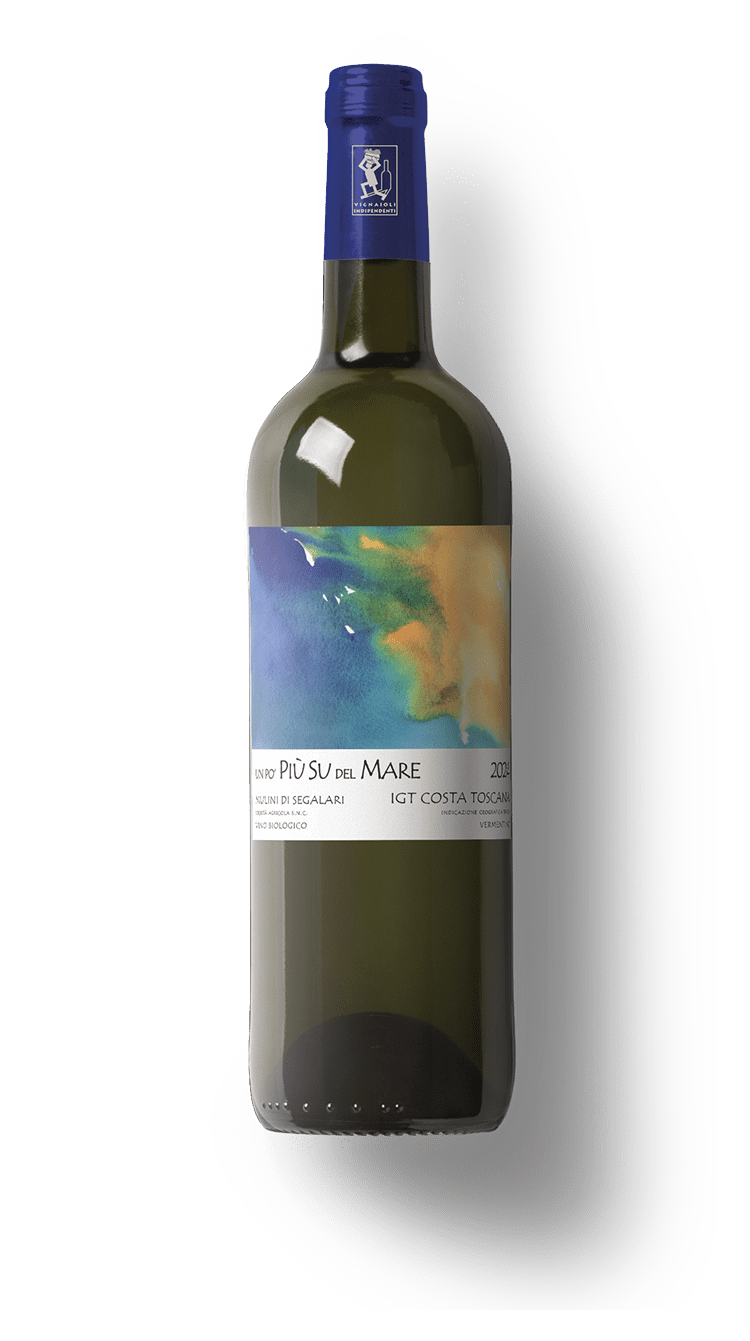
The cultivation without forcing, in harmony with the rhythms and natural resources, determines a low yield per hectare. The selection of the grapes and the naturalness of the vinifications, without adding chemical additives, express and enhance the uniqueness of the Bolgheri terroir in the wine.
The grape harvest started on the first days of August, early in the morning to maintain the aromatic potential, supported by a good acidity; firsts the Manzoni Bianco and the Viognier, then the Vermentino which was harvested in two passages at the end of September. The grapes were harvested by hand in order to select the best clusters, which were carried to the cellar with little cassettes.
The must from Viognier grapes has macerated and fermented with their own skin and autochthonous yeasts at low temperatures, in a steel fermentation tank for over 15 days. The Vermentino grapes, harvested in two steps, de-stemmed, fermented separately. Finally the four wines were united.
After decanting, keeping the fine lees, the wine was placed in a in 500-liter terracotta jars for 6 months.
In general, the season was very alternating, characterized by a varied climate, with intense and prolonged heat waves. The winter was mild and rainy, causing the vines to sprout early in March, with maximum temperatures already above 25°C, and leading to rapid growth of the shoots. In spring, rains alternated with colder days than average, the water resources accumulated during the season allowed the vines to face the hot and dry summer well, with good formation of the bunches. The harvest of the white varieties began at the end of August and continued until mid-September.
2600 bottles
12,5 % – total SO2 75 mg/liter
Of the farm, a Castagneto Carducci, Felciaino locality 115 a
Vermentino 85% e Viognier 15%
Remarkably heterogeneous they mainly have clayey-silty features.
90-120 meters above sea level.
The vineyards are located in a large hilly area lapped by a stream, which determines a warm, cool, ventilated temperate climate, with great excursion between day and night, favoring the cultivation and development of the aromas in the wine.
Guyot rearing, with arch, rows that follow the natural course of the slope of the land, ride on a hill, and are oriented north-south, optimizing the lighting of the sun.
Vines every 60 cm on rows at a distance of 220 cm, a bit more than 5680 vines per hectare.
Organic and Biodynamic, with the certification of Icea, and of Demeter. The vines are cultivated in a natural way, without chemical fertilizers, without using systemic products, favoring the fertilization of the land with the practice of green manure, with symbiosis by mycorrhizae. The treatments against downy mildew are limited to the minimum doses of copper (3 kg/ha) and sulfur, allowed in Biodynamic agriculture. The biodynamic approach induces not to trim the vineyard in June and to spray it with decoctions made by us with nettle, viscose inula and equisetum, collected in the farm. The self-regulation in the production of the fruits and the complex connection with the natural resources allows to obtain high quality bunches.
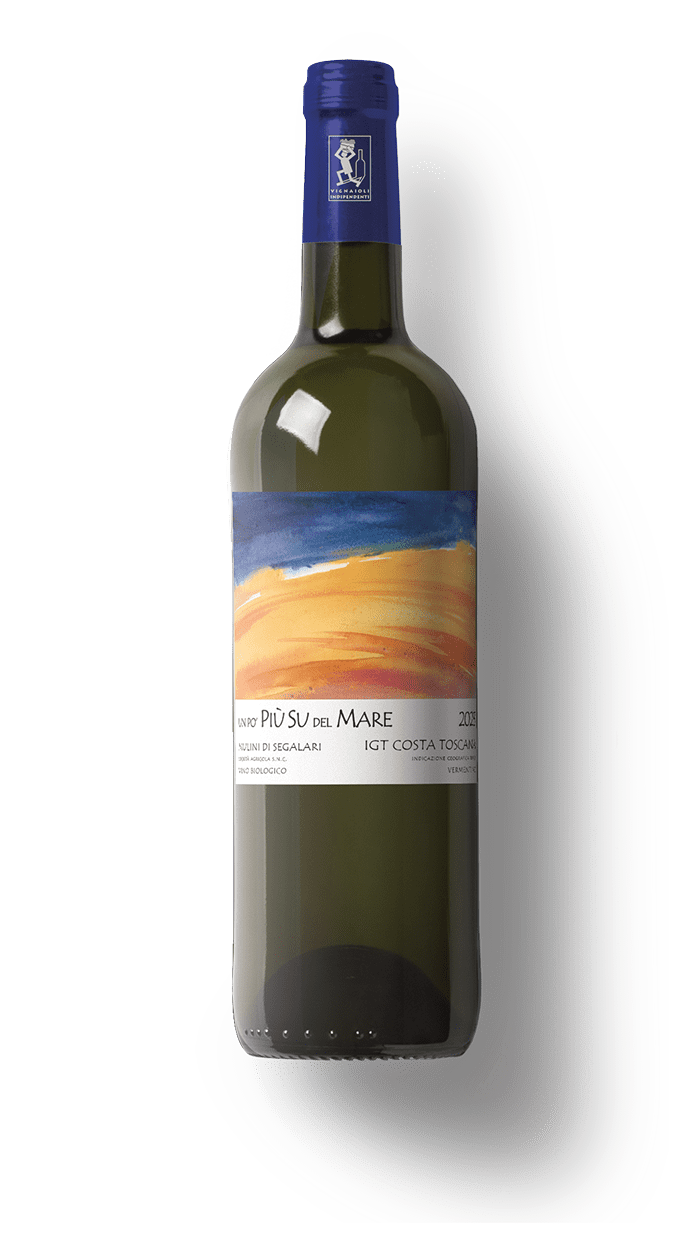
The cultivation without forcing, in harmony with the rhythms and natural resources, determines a low yield per hectare. The selection of the grapes and the naturalness of the vinifications, without adding chemical additives, express and enhance the uniqueness of the Bolgheri terroir in the wine.
The grape harvest started on the first days of August, early in the morning to maintain the aromatic potential, supported by a good acidity; firsts the Manzoni Bianco and the Viognier, then the Vermentino which was harvested in two passages at the end of September. The grapes were harvested by hand in order to select the best clusters, which were carried to the cellar with little cassettes.
The must from Viognier grapes has macerated and fermented with their own skin and autochthonous yeasts at low temperatures, in a steel fermentation tank for over 15 days. The Vermentino grapes, harvested in two steps, de-stemmed, fermented separately. Finally the four wines were united.
After decanting, keeping the fine lees, the wine was placed in a in 500-liter terracotta jars for 6 months.
After a rather mild winter, spring brought abundant rains causing a lower production of Manzoni Bianco, which was absent the first year but was immediately replaced by a powerful and fruity Viognier. July and the first days of August were particularly hot, replaced by an initial disturbance that lowered temperatures, avoiding stress on the plants and subsequently allowing the grapes to ripen correctly. Despite the small production, the climate allowed us to reach both technical and phenolic maturity, allowing us to discover even the varieties most resistant to nature’s adversities.
970 bottles
13 % – SO2 totale 75 mg/liter
Of the farm, a Castagneto Carducci, Felciaino locality 115 a
Vermentino 87%, Viognier 9%, Manzoni Bianco. 4%
Remarkably heterogeneous they mainly have clayey-silty features.
90-120 meters above sea level.
The vineyards are located in a large hilly area lapped by a stream, which determines a warm, cool, ventilated temperate climate, with great excursion between day and night, favoring the cultivation and development of the aromas in the wine.
Guyot rearing, with arch, rows that follow the natural course of the slope of the land, ride on a hill, and are oriented north-south, optimizing the lighting of the sun.
Vines every 60 cm on rows at a distance of 220 cm, a bit more than 5680 vines per hectare.
Organic and Biodynamic, with the certification of Icea, and of Demeter. The vines are cultivated in a natural way, without chemical fertilizers, without using systemic products, favoring the fertilization of the land with the practice of green manure, with symbiosis by mycorrhizae. The treatments against downy mildew are limited to the minimum doses of copper (3 kg/ha) and sulfur, allowed in Biodynamic agriculture. The biodynamic approach induces not to trim the vineyard in June and to spray it with decoctions made by us with nettle, viscose inula and equisetum, collected in the farm. The self-regulation in the production of the fruits and the complex connection with the natural resources allows to obtain high quality bunches.
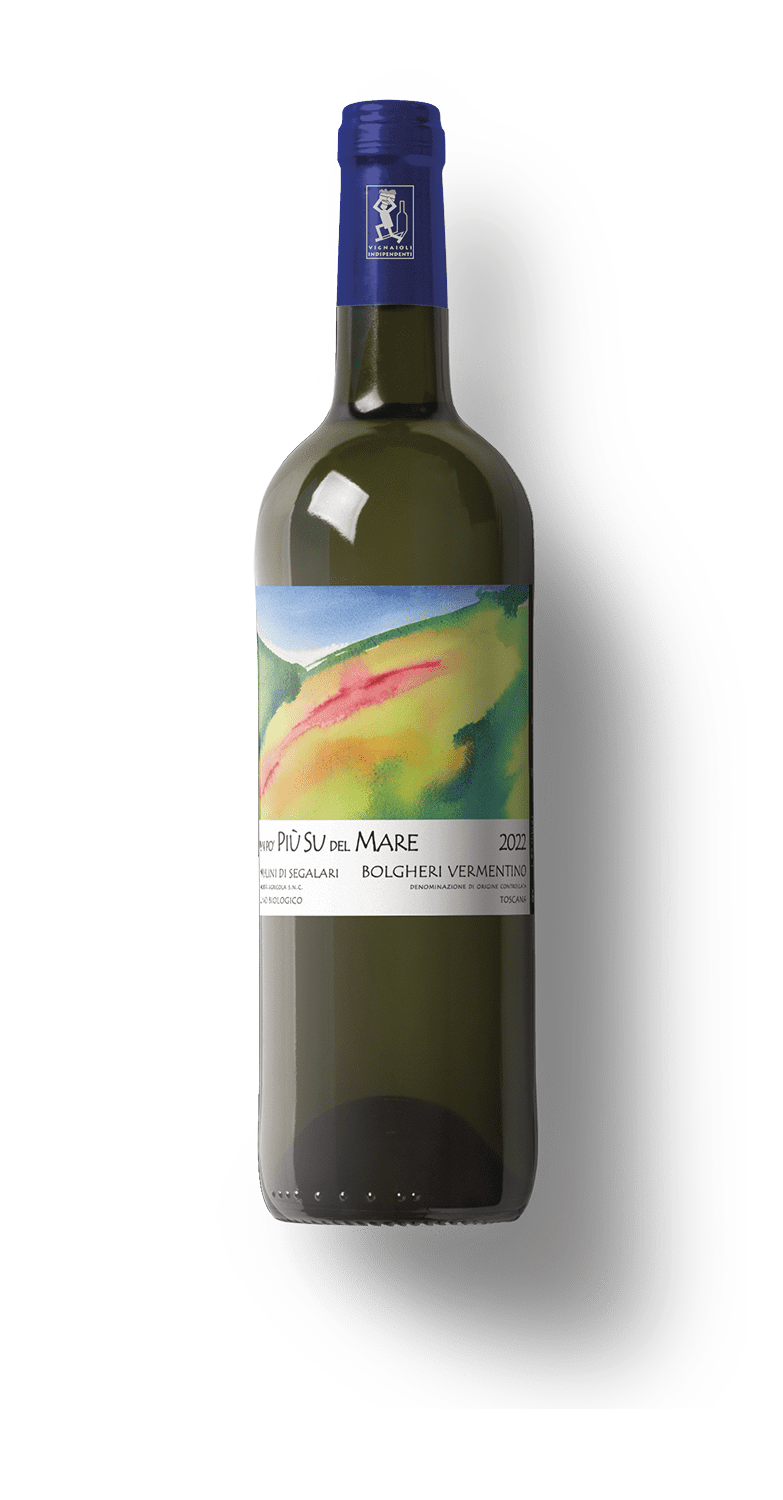
The cultivation without forcing, in harmony with the rhythms and natural resources, determines a low yield per hectare. The selection of the grapes and the naturalness of the vinifications, without adding chemical additives, express and enhance the uniqueness of the Bolgheri terroir in the wine.
The grape harvest started on the first days of August, early in the morning to maintain the aromatic potential, supported by a good acidity; firsts the Manzoni Bianco and the Viognier, then the Vermentino which was harvested in two passages at the end of September. The grapes were harvested by hand in order to select the best clusters, which were carried to the cellar with little cassettes.
The must from the Manzoni Bianco and Viognier grapes has macerated with the skins for 5 days. Then separated from the skins, the must fermented with indigenous yeasts, at low temperature in a steel tank for 10 days. The Vermentino grapes, harvested in two steps, de-stemmed, fermented separately. Finally the three wines were united.
After decanting, keeping the fine lees, the wine was placed in a in 500-liter terracotta jars for 6 months.
The winter without rain, and a dry and hot spring have caused a decrease in the quantity of grapes but a greater intensity, acidity and aromatic component. For this reason it was a season in which phytosanitary treatments were minimal. Finally, in the second half of August, the rains arrived to give resources and vigor to the grapes before the harvest.
1.700 bottles
13,5 % – SO2 totale 75 mg/liter
Of the farm, a Castagneto Carducci, Felciaino locality 115 a
Vermentino 85%, Manzoni Bianco 11%, Vognier 4%
Remarkably heterogeneous they mainly have clayey-silty features.
90-120 meters above sea level.
The vineyards are located in a large hilly area lapped by a stream, which determines a warm, cool, ventilated temperate climate, with great excursion between day and night, favoring the cultivation and development of the aromas in the wine.
Guyot rearing, with arch, rows that follow the natural course of the slope of the land, ride on a hill, and are oriented north-south, optimizing the lighting of the sun.
Vines every 60 cm on rows at a distance of 220 cm, a bit more than 5680 vines per hectare.
Organic and Biodynamic, with the certification of Icea, and of Demeter. The vines are cultivated in a natural way, without chemical fertilizers, without using systemic products, favoring the fertilization of the land with the practice of green manure, with symbiosis by mycorrhizae. The treatments against downy mildew are limited to the minimum doses of copper (3 kg/ha) and sulfur, allowed in Biodynamic agriculture. The biodynamic approach induces not to trim the vineyard in June and to spray it with decoctions made by us with nettle, viscose inula and equisetum, collected in the farm. The self-regulation in the production of the fruits and the complex connection with the natural resources allows to obtain high quality bunches.
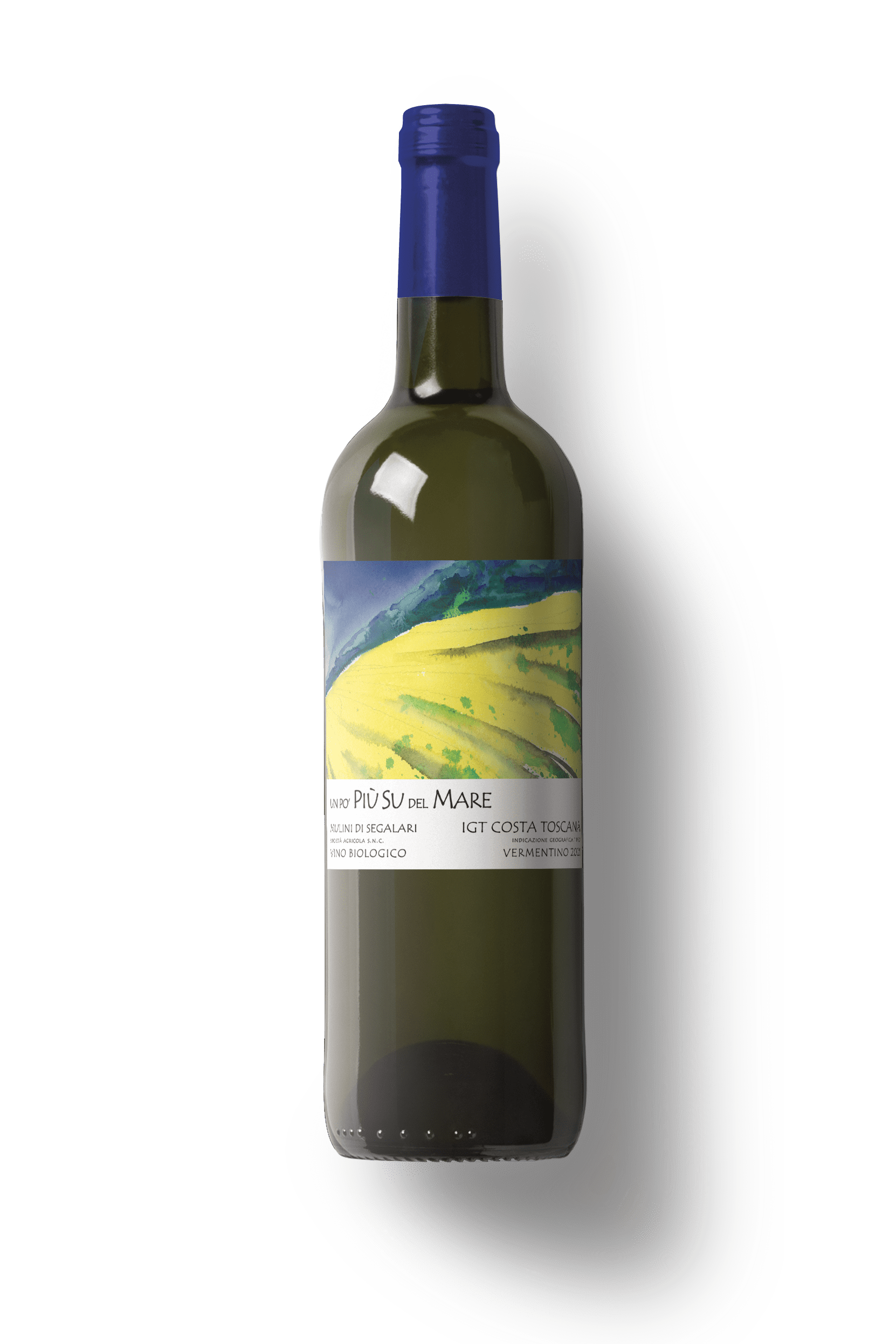
The cultivation without forcing, in harmony with the rhythms and natural resources, determines a low yield per hectare. The selection of the grapes and the naturalness of the vinifications, without adding chemical additives, express and enhance the uniqueness of the Bolgheri terroir in the wine.
The grape harvest was made from the first September, early in the morning to maintain the aromatic potential, supported by a good acidity; first the Manzoni Bianco, then the Vermentino, harvested at the end of September.The grapes of Vermentino, like those of Manzoni, destemmed, fermented with indigenous yeasts, at a low temperature in a steel tank for 10 days.
The must from the Manzoni Bianco and Viognier grapes has macerated with the skins for 5 days. Then separated from the skins, the must fermented with indigenous yeasts, at low temperature in a steel tank for 10 days. The Vermentino grapes, harvested in two steps, de-stemmed, fermented separately. Finally the three wines were united.
After decanting, keeping the fine lees, the wine was placed in a in 500-liter terracotta jars for 6 months.
An abundantly rainy winter supplied the water table well, some spring frosts slightly reduced the potential of the grapes, but overall a hot and dry summer, without excess, favored the good vegetative development of the vine. Then in September, before the harvest, we had beneficial rainfall and a fall in temperatures, which favored phenolic ripening, resulting in a surprising quality of the grapes, in particular for the richness of aromas, gustatory depth, structure and concentration.
2200 bottles
13 % – SO2 totale 75 mg/liter
Of the farm, a Castagneto Carducci, Felciaino locality 115 a
Vermentino 85%, Manzoni B. 12%, Vognier 3%
Remarkably heterogeneous they mainly have clayey-silty features.
90-120 meters above sea level.
The vineyards are located in a large hilly area lapped by a stream, which determines a warm, cool, ventilated temperate climate, with great excursion between day and night, favoring the cultivation and development of the aromas in the wine.
Guyot rearing, with arch, rows that follow the natural course of the slope of the land, ride on a hill, and are oriented north-south, optimizing the lighting of the sun.
Vines every 60 cm on rows at a distance of 220 cm, a bit more than 5680 vines per hectare.
Organic and Biodynamic, with the certification of Icea, and of Demeter. The vines are cultivated in a natural way, without chemical fertilizers, without using systemic products, favoring the fertilization of the land with the practice of green manure, with symbiosis by mycorrhizae. The treatments against downy mildew are limited to the minimum doses of copper (3 kg/ha) and sulfur, allowed in Biodynamic agriculture. The biodynamic approach induces not to trim the vineyard in June and to spray it with decoctions made by us with nettle, viscose inula and equisetum, collected in the farm. The self-regulation in the production of the fruits and the complex connection with the natural resources allows to obtain high quality bunches.
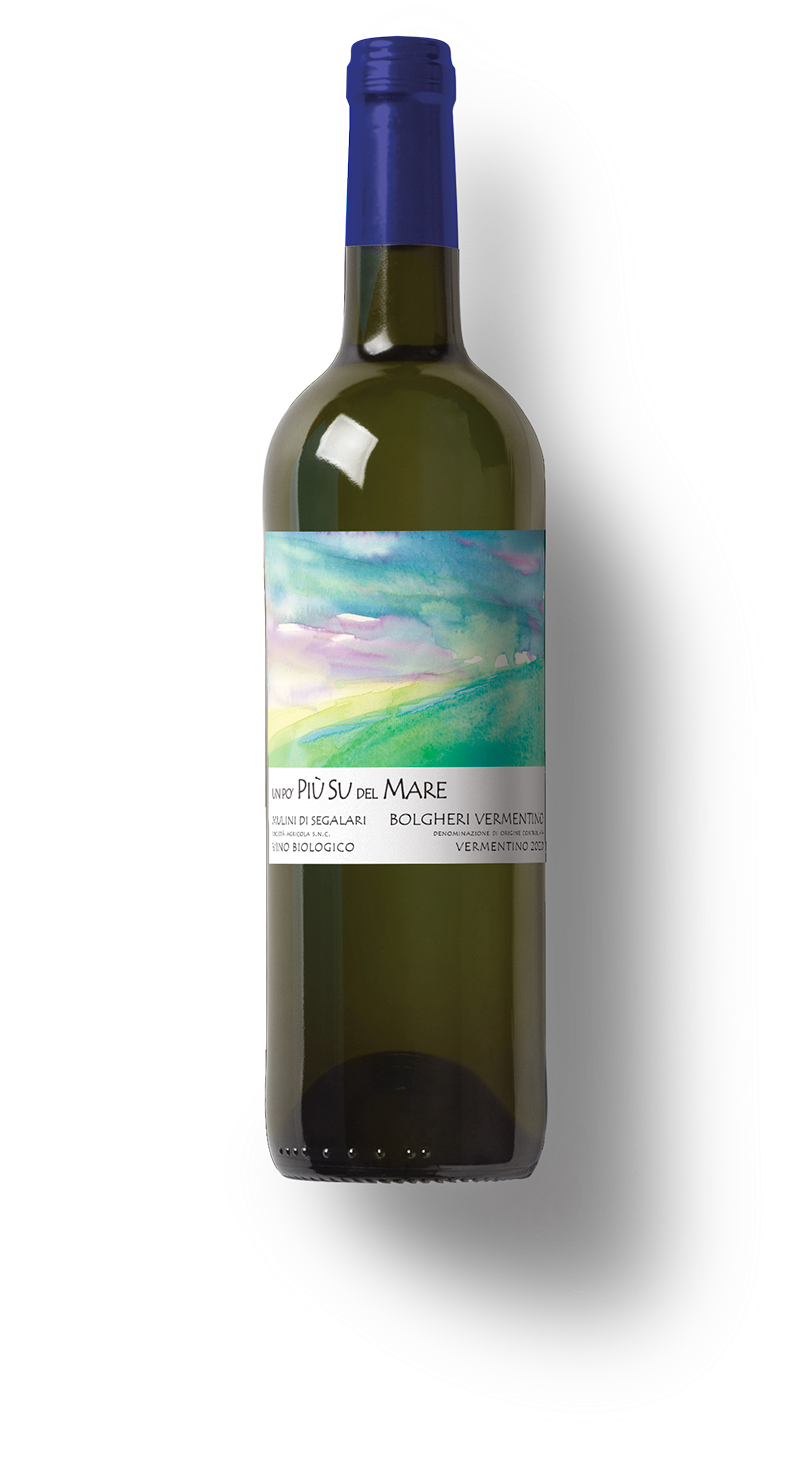
The cultivation without forcing, in harmony with the rhythms and natural resources, determines a low yield per hectare. The selection of the grapes and the naturalness of the vinifications, without adding chemical additives, express and enhance the uniqueness of the Bolgheri terroir in the wine.
The grape harvest was made from the first September, early in the morning to maintain the aromatic potential, supported by a good acidity; first the Manzoni Bianco, then the Vermentino, harvested at the end of September.The grapes of Vermentino, like those of Manzoni, destemmed, fermented with indigenous yeasts, at a low temperature in a steel tank for 10 days.
The must from the Manzoni Bianco and Viognier grapes has macerated with the skins for 5 days. Then separated from the skins, the must fermented with indigenous yeasts, at low temperature in a steel tank for 10 days. The Vermentino grapes, harvested in two steps, de-stemmed, fermented separately. Finally the three wines were united.
After decanting, keeping the fine lees, the wine was placed in a in 500-liter terracotta jars for 6 months.
The winter was mild, with rare rains. In March there are still a few cold days. The temperature rose from mid-April, resulting in a regular spring, with excellent flowering and fruit set from May onwards. The rains in June greatly stimulated the vegetation of the vines, forcing hard work in the vineyard. Hot and dry summer, with many days above average, but cool nights, for good acidity and development of aromas in the grapes. Some rain at the end of August to reduce the water stress of the vines. The harvest at Mulini di Segalari began at the end of August with Manzoni Bianco and Viognier, then Vermentino after mid-September, in two passes.
700 bottles
12,50 % – SO2 totale 70 mg/liter
Of the farm, a Castagneto Carducci, Felciaino locality 115 a
Vermentino 85%, Manzoni B. 12%, Vognier 3%
Remarkably heterogeneous they mainly have clayey-silty features.
90-120 meters above sea level.
The vineyards are located in a large hilly area lapped by a stream, which determines a warm, cool, ventilated temperate climate, with great excursion between day and night, favoring the cultivation and development of the aromas in the wine.
Guyot rearing, with arch, rows that follow the natural course of the slope of the land, ride on a hill, and are oriented north-south, optimizing the lighting of the sun.
Vines every 60 cm on rows at a distance of 220 cm, a bit more than 5680 vines per hectare.
Organic and Biodynamic, with the certification of Icea, and of Demeter. The vines are cultivated in a natural way, without chemical fertilizers, without using systemic products, favoring the fertilization of the land with the practice of green manure, with symbiosis by mycorrhizae. The treatments against downy mildew are limited to the minimum doses of copper (3 kg/ha) and sulfur, allowed in Biodynamic agriculture. The biodynamic approach induces not to trim the vineyard in June and to spray it with decoctions made by us with nettle, viscose inula and equisetum, collected in the farm. The self-regulation in the production of the fruits and the complex connection with the natural resources allows to obtain high quality bunches.
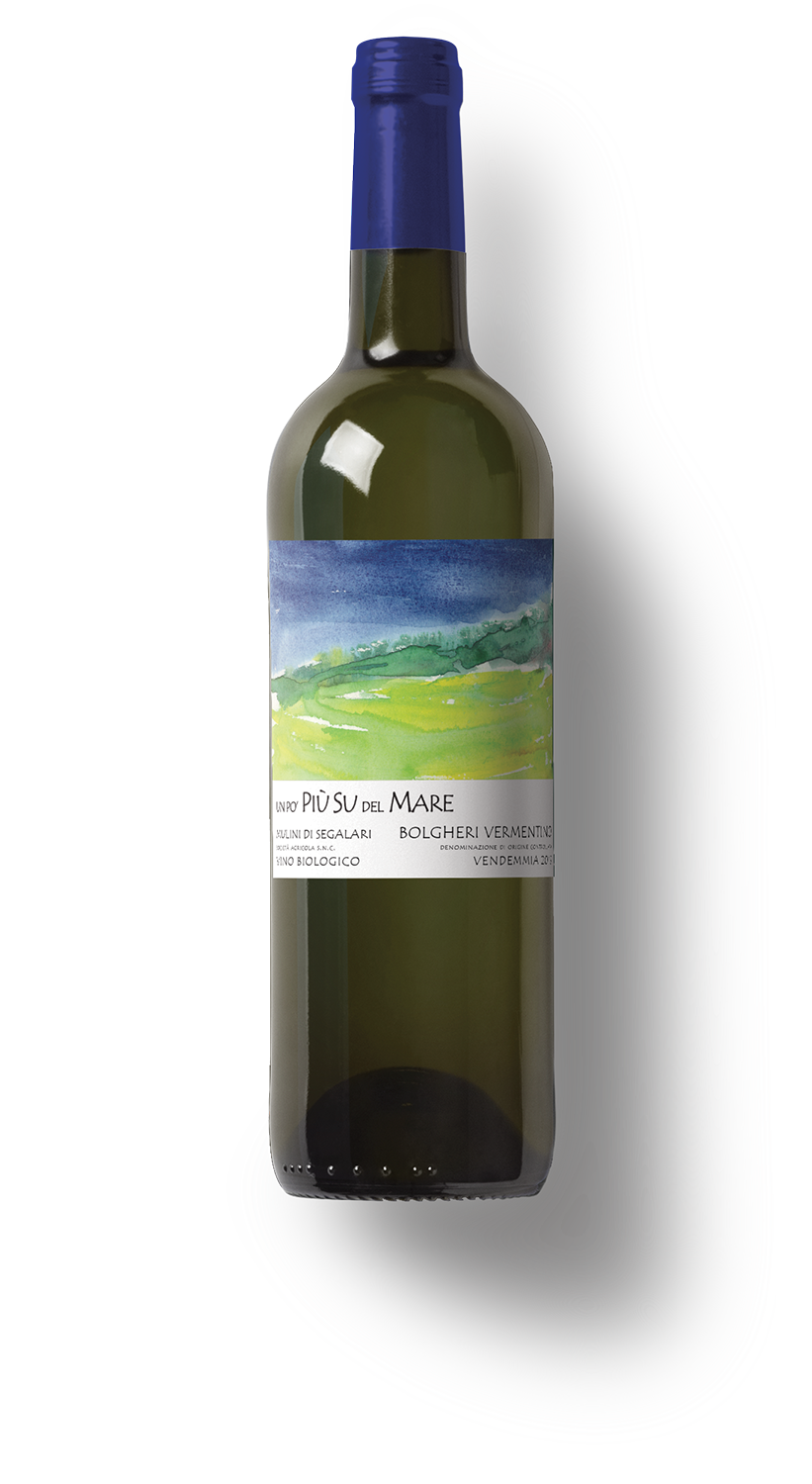
The cultivation without forcing, in harmony with the rhythms and natural resources, determines a low yield per hectare. The selection of the grapes and the naturalness of the vinifications, without adding chemical additives, express and enhance the uniqueness of the Bolgheri terroir in the wine.
The grape harvest was made from the first September, early in the morning to maintain the aromatic potential, supported by a good acidity; first the Manzoni Bianco, then the Vermentino, harvested at the end of September.The grapes of Vermentino, like those of Manzoni, destemmed, fermented with indigenous yeasts, at a low temperature in a steel tank for 10 days.
The must from the Manzoni Bianco and Viognier grapes has macerated with the skins for 5 days. Then separated from the skins, the must fermented with indigenous yeasts, at low temperature in a steel tank for 10 days. The Vermentino grapes, harvested in two steps, de-stemmed, fermented separately. Finally the three wines were united.
After decanting, keeping the fine lees, the wine was placed in a in 500-liter terracotta jars for 6 months.
Mild temperatures in the first winter, with cold days between January and February. Spring was cool at the beginning, with frequent rains, the budding of the vines was delayed, while in May the temperatures dropped significantly, delaying the vegetative restart. Then a sudden hot in June and July, with rains only at the end of the month, made the vegetative cycle resume steadily and vigorously. In August and September the weather was sunny and more stable, optimal for obtaining a good ripening of the grapes.
1400 bottles
12,50 % – SO2 totale 70 mg/liter
DOC Bolgheri Rosso
DOC Bolgheri Superiore
DOC Bolgheri Rosato
IGT Costa Toscana
IGT Costa Toscana